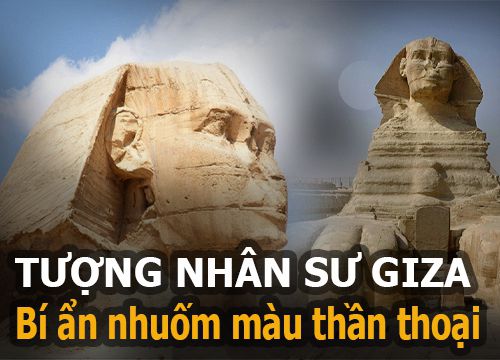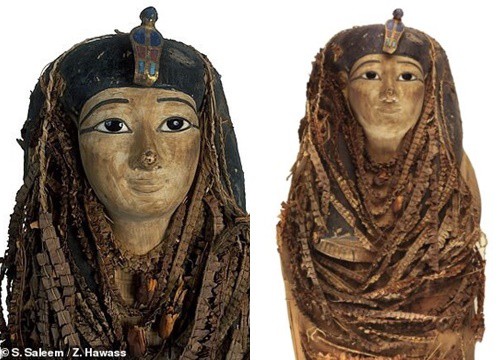The Nile: A mysterious and unknown origin spanning three millennia

5 | 0 Discuss | Share
Referring to ancient Egypt, we not only refer to the Pyramids that contain many secrets and mysterious lands, but also famous for thousands of years old mummies that are still intact to this day.
The ancient Egyptians believed that death was only a temporary state, life would continue after death, and their souls needed a body. Therefore, they seek to preserve the body in the best way and consider it essential for the continuation of life. If the body is destroyed, the soul may be lost and cannot enter the afterlife. This is also the reason why tomb preparation was considered an important ritual in ancient Egyptian society. This process can be prepared long before the person dies.
Mummification began around 2600 BC in Egypt, and initially, only pharaohs - rulers of the kingdom were allowed to mummify. About 600 years later, this thinking changed, and ordinary people were also allowed to embalm and place valuables in their own tombs.
Normally, the mummification process will take about 70 days and includes the steps below.
As for tools, to embalm, they need tools such as: Four vials of organs, natron salt, linen, ... and an experienced monk to carry out this process.
1. Removal of organs
First, they will use a special metal hook, close the skull from the nostrils and gently stir until the cerebrospinal fluid flows along the nose out. After removing all the cerebrospinal fluid, they poured alcohol inside, also from the nasal passages, to clean and disinfect.
Then, organs such as the stomach, liver, lungs and intestines will be removed from the mummy through a small incision on the left side of the abdomen. The organs are removed from the body by the priest and placed in canopic vases modeled after the four sons of Horus to protect the organs and place it in the grave during the burial ceremony. .
Specifically:
- The head god Imset is responsible for protecting the liver
- The wolf-headed god Duamutef is responsible for protecting the stomach
- The baboon god Hapi is responsible for protecting the lungs
- The bird-headed god Qebehsenuef is responsible for protecting the intestines
Only the heart will be kept inside the body because the ancient Egyptians believed that the heart contains a person's consciousness and personality. However, according to statistics, only about 25% of mummies discovered still have the heart inside.
2. Cleanse the body
In the next step, the inside of the dead body will be washed with alcohol and aromatherapy. Different parts will use different materials and methods for cleaning. With an empty skull, the tree sap is poured in through the nose. After that, the dead will be "bathed" for the last time with Nile water, this is a stage of religious significance.
3. Natron salt incubation
After the above process, the mummy will be brushed with palm oil and then covered with Natron salt, an important material that keeps the mummy intact over time to kill bacteria and parasites, it can also remove water from the body. body tissue, preventing the decomposition of corpses.
Normally, the body will be salted with Natron for 35 days and the result is a solid brown mass.
After 35 days, the monks would pour perfume and cover the body with a layer of resin to seal, then massage the body with a wax mixture containing cedar oil. The next step is to place a metal piece in the shape of Horus's eye over the incision in the mummy's abdomen.
4. Wrap the body and put it in the coffin
At the next stage, the embalmers begin to pack the corpse. They use linen wrapped around the head and neck. Fingers and toes are wrapped separately. The ancient Egyptians believed that amulets could keep the dead safe on their way to the afterlife, so they placed them between the layers of wrappings around the body. As the craftsmen carried out the mummification process, a spirit The priest will stand next to read mantras to help the dead ward off evil spirits, evil spirits.
The legs and arms of the body were tied together and the workers placed between the arms the body was a book for the dead.
The body will be rolled up in more layers of linen. Workers apply adhesive resin to each layer of fabric to hold them together. A large cloth was used to wrap around the mummy. Then, the image of the god Osiris was painted on the surface of the cloth by the craftsmen. The mummy was wrapped in another large linen cloth. Finally, the workers used a lot of linen rope to wrap around the mummy. They then placed the mummy in a small coffin that was placed inside a larger coffin.
Today, archaeologists and experts use X-rays to study ancient Egyptian mummies. Under modern technology, scientists discovered that the nerves, blood vessels in the nail layers, different layers of skin, and even fat cells were still intact.
This led the ancient Egyptians to be considered masters of mummification. Over thousands of years, these mummies have provided us with valuable information about this ancient civilization.
Queen of Egypt Hatshepsut - The first female pharaoh to rule the country without losing a single pharaoh  youtuber10:37:20 18/06/2021Egyptian history records many cases of women holding the pharaoh's throne. Among them, the most powerful and longest reigning was Hatshepsut, whose tomb was destroyed after 20 years of slumber. Hatshepsut (1508 - 1458 BC) was the eldest daughter of King Thutmose I and Queen Ahmose, the first king and queen of the...
youtuber10:37:20 18/06/2021Egyptian history records many cases of women holding the pharaoh's throne. Among them, the most powerful and longest reigning was Hatshepsut, whose tomb was destroyed after 20 years of slumber. Hatshepsut (1508 - 1458 BC) was the eldest daughter of King Thutmose I and Queen Ahmose, the first king and queen of the...

5 | 0 Discuss | Share

1 | 0 Discuss | Share

2 | 0 Discuss | Share

3 | 0 Discuss | Share

1 | 0 Discuss | Share

5 | 0 Discuss | Share

2 | 0 Discuss | Share

2 | 0 Discuss | Share

3 | 0 Discuss | Share

3 | 0 Discuss | Share

2 | 0 Discuss | Share

3 | 0 Discuss | Share






2 | 0 Discuss | Report